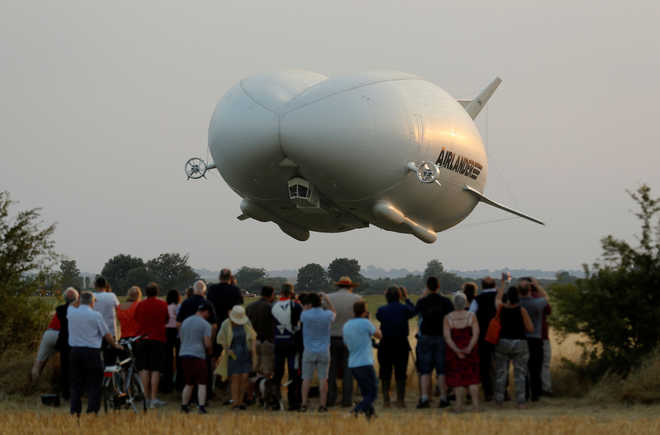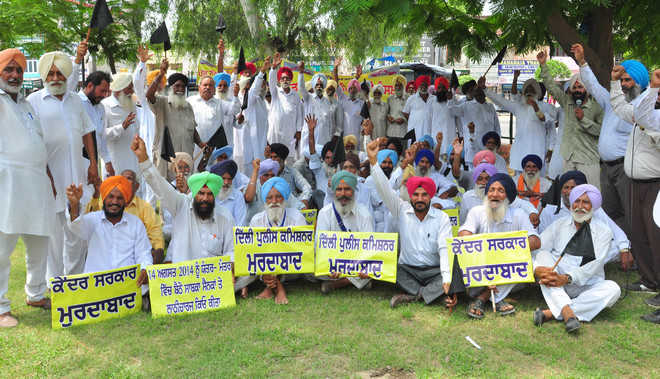Major General Mrinal Suman
It was the month of November 1971. War was imminent and the forces were being mobilised at a frenetic pace. Troops and equipment were being ferried to the forward areas by tens of special military trains every day. For the Westerns sector, Ambala, Ludhiana and Jalandhar were the main hubs as almost all trains passed through these stations.
One still recalls the warm reception the troops got at these stations. Hordes of BJP and RSS workers received the trains with shouts of ‘Bharat Mata Ki Jai’. Local bands were in attendance playing martial music. The atmosphere was charged with nationalist fervour. Troops were treated with tremendous warmth; honoured with garland; served hot food and tea; and assured of the whole country’s support.
It was an unforgettable experience. BJP endeared itself to the soldiering community. Soldiers’ esteem for the party went up considerably and they have been voting for the party. Modi’s arrival in the last general election further consolidated the bond.
The above has been recounted here to compare the then prevailing bonhomie with the present state of fast spreading disillusionment with BJP. Modi-euphoria amongst the soldiers is on the wane. Soon, the honeymoon will be over for good. All the goodwill and support assiduously garnered by BJP workers over the years have been frittered away by the short-sighted leadership.
During an informal survey in Punjab, almost all soldiers and veterans expressed their disenchantment with the current government. They are convinced that BJP is an equally self-seeking party, out to garner votes by exploiting neglected soldiers’ gullibility. The general perception is that Manohar Parrikar is helpless due to some inimical elements’ anti-soldier influence on Modi. They hold Modi responsible for letting them down.
The most surprising aspect of the complete phenomenon is that in spite of granting OROP (whatever be the form), Modi government has failed to earn credit for it. On the contrary, there is an acute sense of betrayal amongst the soldiers. Why and how has the relationship reached such a low point? Here are some obvious reasons.
Seeds of distrust were sown during the very first meeting of the then Defence Minister Jaitley with the veterans. His advice to them to lower their expectations came as a bolt from the blue. The veterans were aghast. How could BJP leadership renege on a solemn commitment? To soldiers, it was an act of sacrilege. They felt cheated and used.
The issue of OROP was handled in a most graceless and blundering manner. It took undue long for the government to announce it, denting its credibility. By that time, the soldiering community had lost its patience and faith. Jantar Mantra protest did immense damage to BJP’s standing. Worse, sights of police manhandling aged veterans will remain etched in the minds of all soldiers as a proof of government’s insincerity. No political leader from the ruling party displayed the sagacity to visit the protesting veterans to assuage their hurt feelings. The neglect was seen as a deliberate snub and it compounded distrust.
One wonders at the intelligence of the policy makers who agreed to spend over Rs 8,000 crore but left veterans dissatisfied for a few hundred crores by tweaking the well-accepted definition of OROP. Resultantly, instead of earning gratitude, it forced veterans to go to the courts. Can there be a bigger example of senseless behaviour!
Although the government claims that the National Commission for Ex-Servicemen Bill 2015 has already been drafted, there is no news of its likely introduction in the parliament. Even the draft has not been put in the public domain for suggestions of the stakeholders. Twenty six months is a long period for any ‘government that works’ to have the bill legislated. Apprehensions are being expressed that the proposed commission will be nothing more than a parking slot for the retired bureaucrats.
Approval for the construction of a National War Memorial and a National War Museum near India Gate was granted in October 2015 at an estimated cost of Rs 500 crore. Further progress is not known.
The department to look after the welfare of ex-servicemen remains staffed with personnel whose sole mission in life is to inflict indignity on the veterans. Not a single service officer has been posted to it. Despite Parrikar’s assertions to the contrary, the government continues to contest court orders given in favour of the ex-servicemen with vindictiveness and wickedness.
With Modi’s reputation for taking bold decisions, it was expected that his government would initiate long overdue reforms in the higher defence management of the country. Nothing has been done and not a single progressive step has been taken. It is apathy as usual. There is no sign of the appointment of Chief of Defence Service. No creation of joint commands. No integration of service personnel in the Ministry of Defence. It will not be incorrect to deduce that the obdurate bureaucracy remains untamed.
BJP’s handling of the issues pertaining to the seventh pay commission is symptomatic of the brazenness of its duplicitous and hypocritical mindset. It has failed to safeguard soldiers’ interests. The least it could have done was to co-opt some service officers with the Empowered Committee of Secretaries. But then, it is too much to expect such a farsighted approach from a blinkered leadership that is hell-bent to shoot itself in the foot by losing the backing of the solid support base of soldiers and ex-servicemen.
Even the dumbest of the dumb knows that there is no justification for denying Non- Functional Upgradation to the services. Indiscipline has become rampant in the organisations that are manned jointly by uniformed and civilian officers. As seniority is decided on the basis of pay, every civilian considers himself senior to his service boss. The working environment has got terribly vitiated but the government continues to remain blind.
Modi and his advisors failed to understand the psychology of soldiers. They treated them as a vote bank with false promises. For soldiers, a promise made by the leadership is a solemn commitment without any ifs and buts. They consider it to be a matter of honour. Breach means loss of credibility.
Unfortunately, smug in its unexpected victory in the general elections, BJP considers itself to be invincible. It has failed to appreciate the sensitivities of the soldiers. Despite repeated requests, Modi has not been able to spare a few minutes to meet the veterans during the last 26 months – some arrogance and disdain for the soldiering community.
BJP can write off states that have massive soldiering fraternity, like Punjab, Himachal Pradesh, and Uttarakhand. Punjab is not Assam. In Punjab, almost all families have ties with the services. Time is fast running out for BJP. Even Kejriwal has started appearing more sincere and true to his word than Modi.
Somehow, the environment has come to believe that the ruling trio of Modi, Shah and Jaitley hold the soldiers in contempt and intentionally humiliate them through deliberate indifference and downgradation. Haughtiness seems to have gone to their heads. They will do well to remember what Swami Vivekanand cautioned, “Arrogance is the first sign of degeneration.”*****





































































